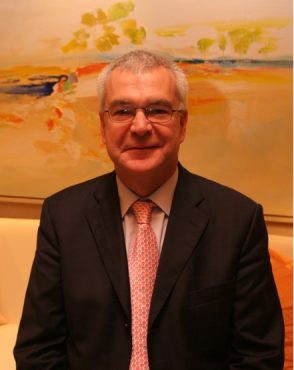 |
| EGCS Director, Donald Gregory |
In less than 70 days the
International Maritime Organization’s 2020 sulphur cap will kick in, bringing
with it a number of changes in the shipping industry.
Of the various compliance solutions
available on the market, exhaust gas cleaning systems (EGCS), also known as
scrubbers, are ranked as a popular choice for both existing and new build
vessels.
simplicity with regard to installation and a relatively short return on
investment.
where installing scrubbers is not a viable solution, such as lower fuel
consumption ships that don’t enjoy the rate of savings as ships operated with
EGCS and therefore have a longer payback. In a few cases, space and other
technical factors can play a part in the decision not to scrub.
from the Exhaust Gas Cleaning System Association (EGCSA), there will be at
least 4,000 ships fitted with scrubbers in 2020.
and advice to ship-owners, and participates in forums where regulations are
developed, impact assessments are actioned and evaluated. It is working with
the International Chamber of Shipping (ICS) to form a group of designers and
users to identify and improve quality and performance of EGCS.
gravitated towards the larger vessels and vessels with high installed power
where the economics of the investment versus the lower fuel cost are projected
to give a high rate of return.
sea water as the process fluid and discharge the treated and continuously
monitored water overboard, in other words so-called open loop EGCS.
the shipping industry and the development of alternative marine fuels,
including zero-emission fuels, scrubbers have not been identified as a
long-term solution, with some market analysts predicting their life-span not to
exceed ten years.
saying that the demand for scrubbers would last for at least the next 30 years.
the EGCSA Director, Donald Gregory, explained that with the development of new
fuels, scrubbers “may well evolve into much more advanced and sophisticated
systems which purify the air that is discharged. The market life expectancy of
current scrubbers removing SOx is at least another 10 years.”
molecule of solid and liquid fuels that are easily transportable and managed.
What may change is the source of the carbon, i.e. not from fossil, so I am
doubtful about decarbonization,” Gregory said, referring to the scrubber
market’s way forward on the heels of the establishment of Getting to Zero
Coalition through which industry leaders such as Maersk, Norden, ABS etc,
committed to leading the push for shipping’s decarbonization.
for 2020, Gregory said that many owners have not done their due diligence or
have only half done it. There has also been uncertainty about fuel pricing, but
risk and deriving advantage from it has been the shipowners’ bread and butter
for years, Gregory continued.
that scrubbers “simply transfer the pollution produced by vessels from the air
to the ocean,” EGCSA director said that published evidence from research
indicates that air quality is improved by removing SOx from the air through
exhaust gas cleaning systems, adding that “the current status quo is that HSFO
and distillate fuel emissions to air eventually settle in the sea.”
are scrubbed and particulate in the scrubbed water is treated as necessary to
ensure the water discharged meets the strict and continuously monitored
International Maritime Organisation (IMO) limits. EGCSA has carried out water
sampling as have many other organisations. None of the research indicates
significant exceedances of the IMO limits or for that matter other standards
such as the World Health Organisation (WHO) water quality standards.
oil refineries and even the Port of Rotterdam have not identified any impact of
scrubber process water on the environment in the water.”
issues that were reported with scrubbers, EGCSA said that incidents such as
corrosion and water discharge into the auxiliary engine had been dealt with
through design alterations. After years of development, the systems are today
made of high-grade stainless steel and have an expected life of over 30 years.
include new types of materials such as glass reinforced plastic pipes, special
stainless steels, hull coatings, use of monitoring equipment etc. These are all
reliable and long lasting if the installations are undertaken by fabricators
and installers with the appropriate experience and expertise, the association
said.
open-loop scrubbers by some of the world’s major ports, Gregory said that the
decision-making process lacked science- or fact- based justification.
Nevertheless, he doesn’t believe such decisions could jeopardize the take-up of
EGCS to a major degree since ships fitted with scrubbers can easily switch over
fuels to comply with the bans when entering the ports in question.
ship’s fuel consumption occurs while it is in deep sea where it can comply with
the sulphur cap by means of an EGCS.
business decision. So far, the calculated risk and reward balance seems to
continue to be in favour of the flexibility and cost savings provided by EGCS,”
he concluded.
environmentally-friendly future of the sector, Gregory noted that ports and
shippers need to take responsibility for their actions and support development,
adding that CO2 emissions “need to be measured and charged at a rate of at
least USD 150/tonne.”
emissions derived from fossil sources. Then there is the question of where the
energy on board the ship is going to come from? Nuclear seems to be a sensible
and coherent option as do liquid fuels.
then IC engines fuelled by hydrogen and carbon where the carbon
has been recovered from the atmosphere may be a solution. This is a question
that has so many aspects to it that potential answers to it could fill an
entire magazine.”
